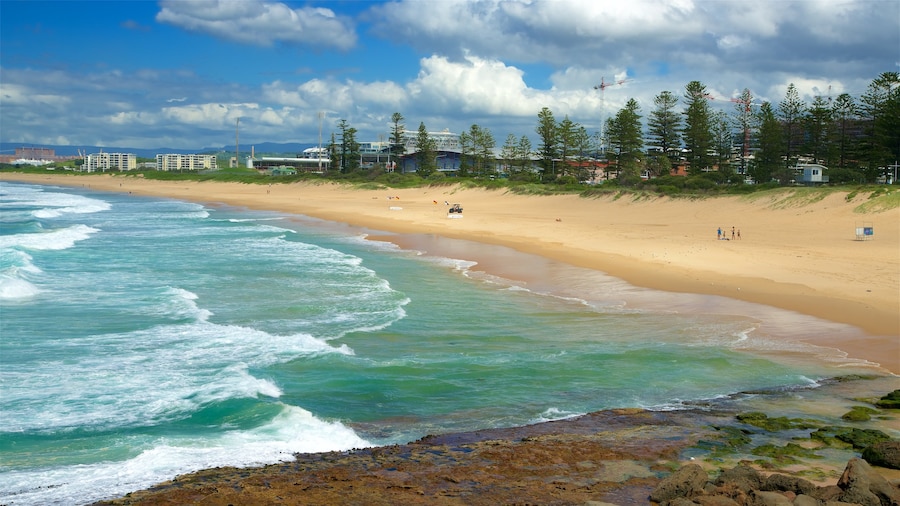Benteng Flagstaff Hill, juga dikenal sebagai Stockade Point atau Signal Hill, merupakan landmark dalam sejarah militer Wollongong awal. Dibangun pada akhir abad ke-19 sebagai garis pertahanan pertama terhadap potensi serangan Rusia, benteng ini memberikan sekilas dari ketegangan dan teknologi militer di New South Wales pada saat itu. Amati baterai benteng dari meriam yang dipugar dengan indah dan lihat saat penyembunyian senjata benteng yang dipasang.
Telusuri halaman berumput di Taman Flagstaff Hill dan panjat perlahan bukit yang menanjak menuju benteng. Anda akan melihat senjata seberat 68 pon, yang mengarah ke samudra. Meriam ini dipasang pada tahun 1881 untuk mempertahankan pelabuhan Wollongong. Kemudian segera disadari bahwa baterai tiga senjata tidak akan cukup untuk mencegah serangan musuh, sehingga lubang berbentuk lingkaran digali pada tahun 1890 untuk menyimpan senjata pneumatik hidro muat belakang yang tersembunyi.
Kini, Anda dapat melihat lubang beton melingkar menyatu di bukit. Terowongan menghubungkan lubang ke peluru bawah tanah dan gudang peluru dibangun dalam bukit. Penempatan senjata dimaksudkan untuk memperkuat dan cukup tepat untuk menenggelamkan kapal dari Pelabuhan Kembla di selatan hingga Bulli di utara. Lihat pintu masuk ke benteng, yang terletak di dalam dinding bata yang diatur di sisi selatan bukit.
Teruskan perjalanan Anda di sekitar lokasi untuk menemukan penanda keterangan dan plakat informasi. Melihat ke luar dari tempat peninggalan ini, Anda dapat melihat pemandangan keseluruhan dari Pelabuhan Wollongong dan Pantai Kota. Lihat bangunan bersejarah Mercusuar Utama Wollongong, yang telah menyorotkan cahayanya ke laut sejak tahun 1936.
Anda akan menemukan beberapa kafe dan restoran menghadap pantai dan pelabuhan di bawah bukit. Taman Flagstaff Hill dapat diakses melalui jalan lingkar dan ada tempat parkir di samping lokasi benteng. Benteng Flagstaff Hill berjarak kurang dari 10 menit berkendara dari pusat kota Wollongong dan dapat dijangkau dengan bus. Benteng ini dapat dikunjungi kapan saja.















